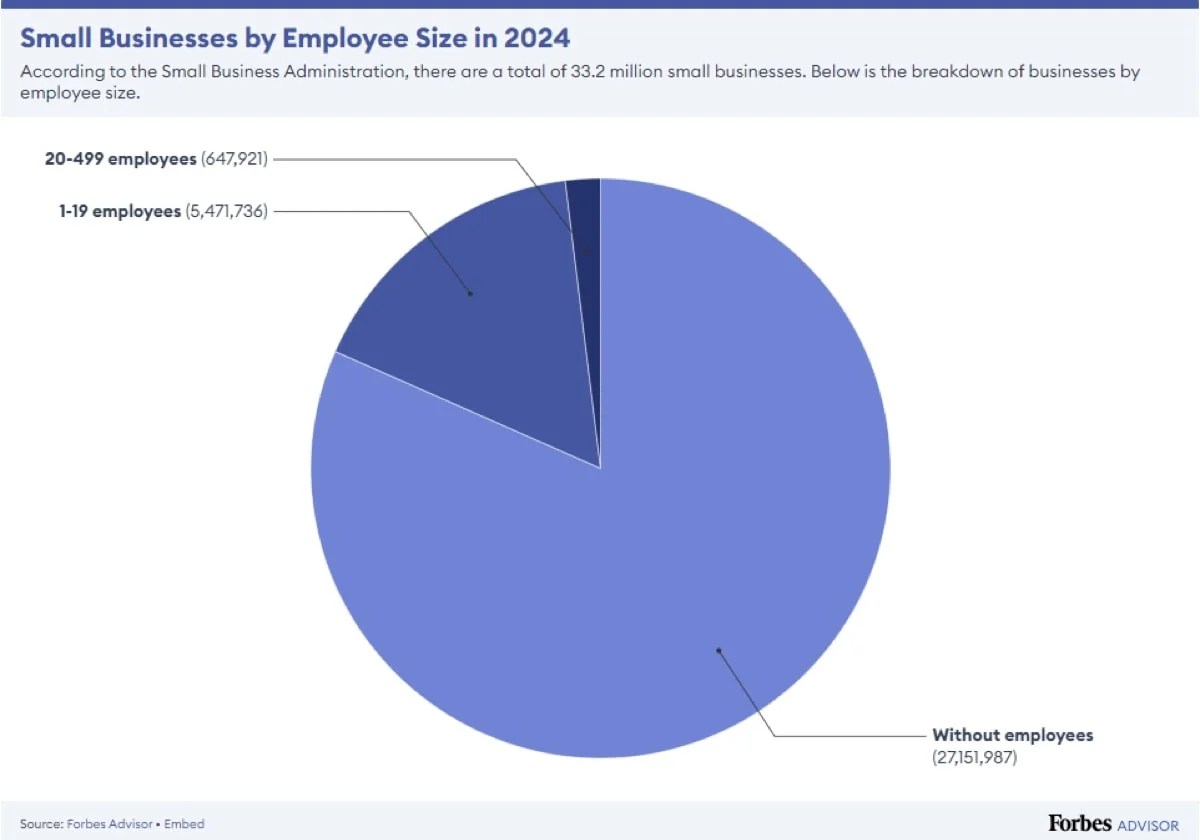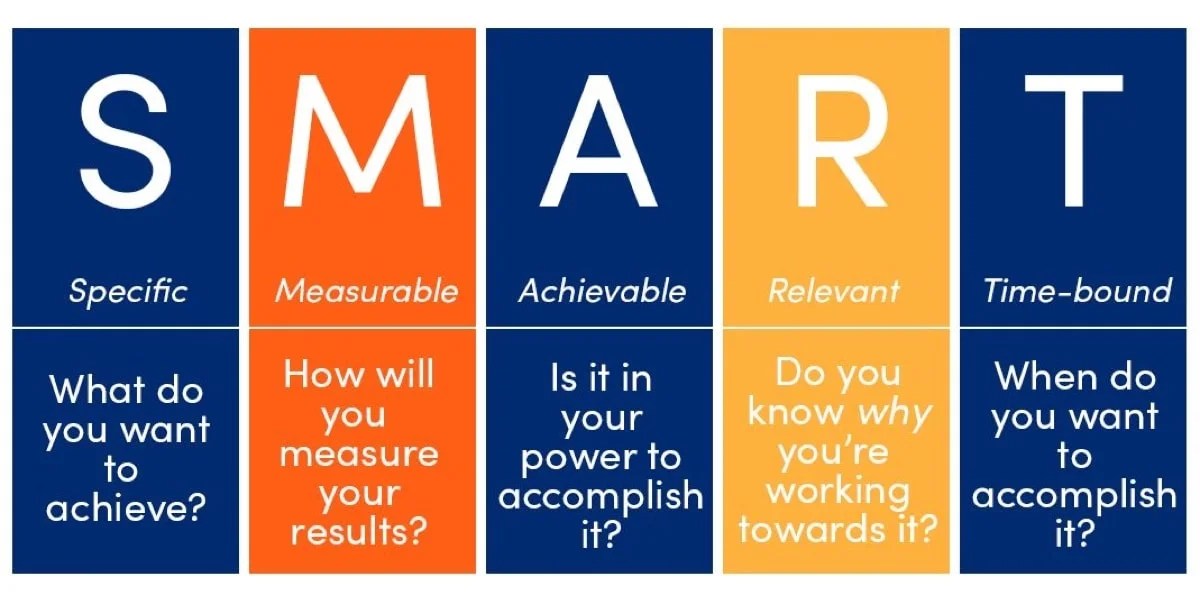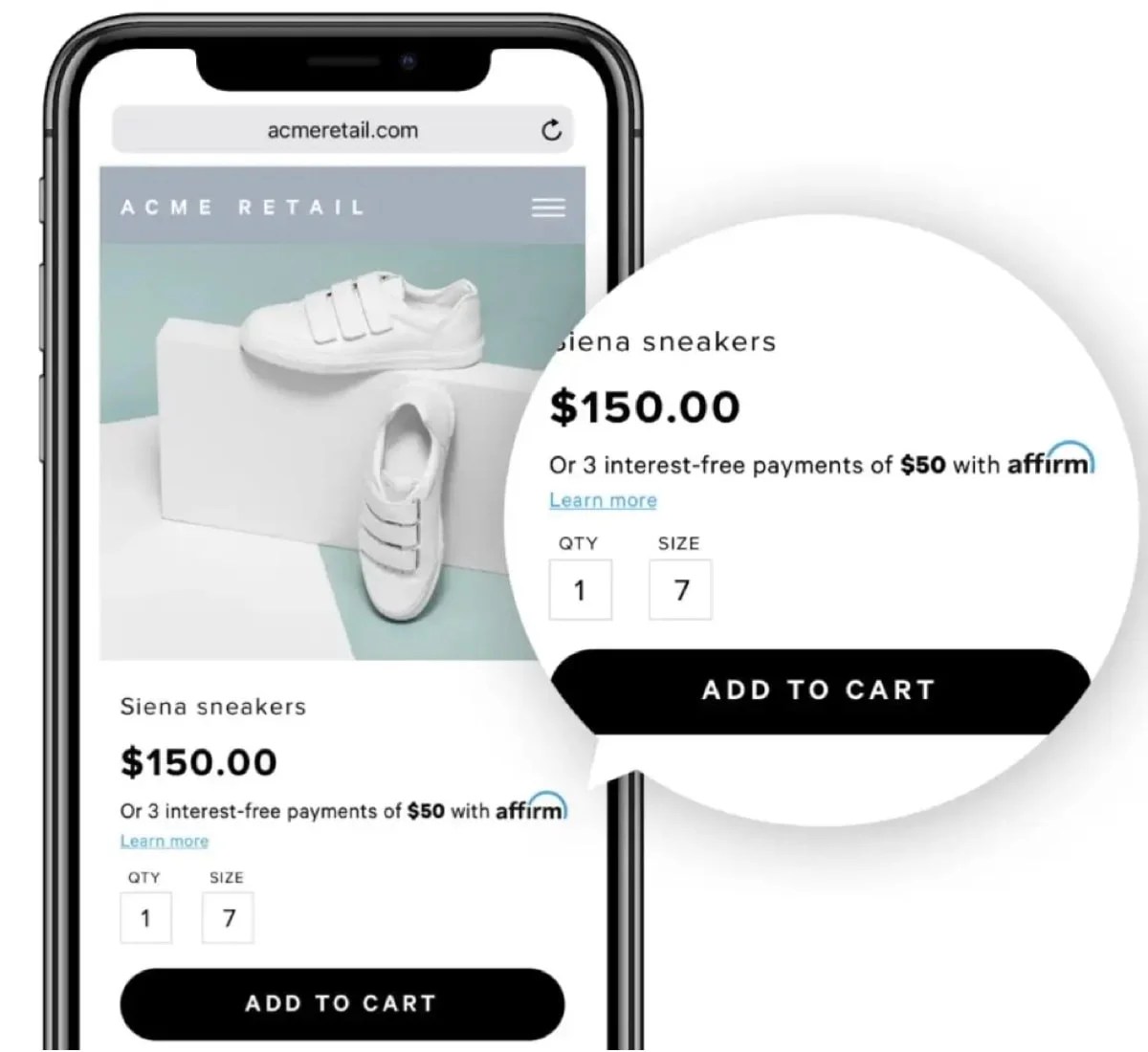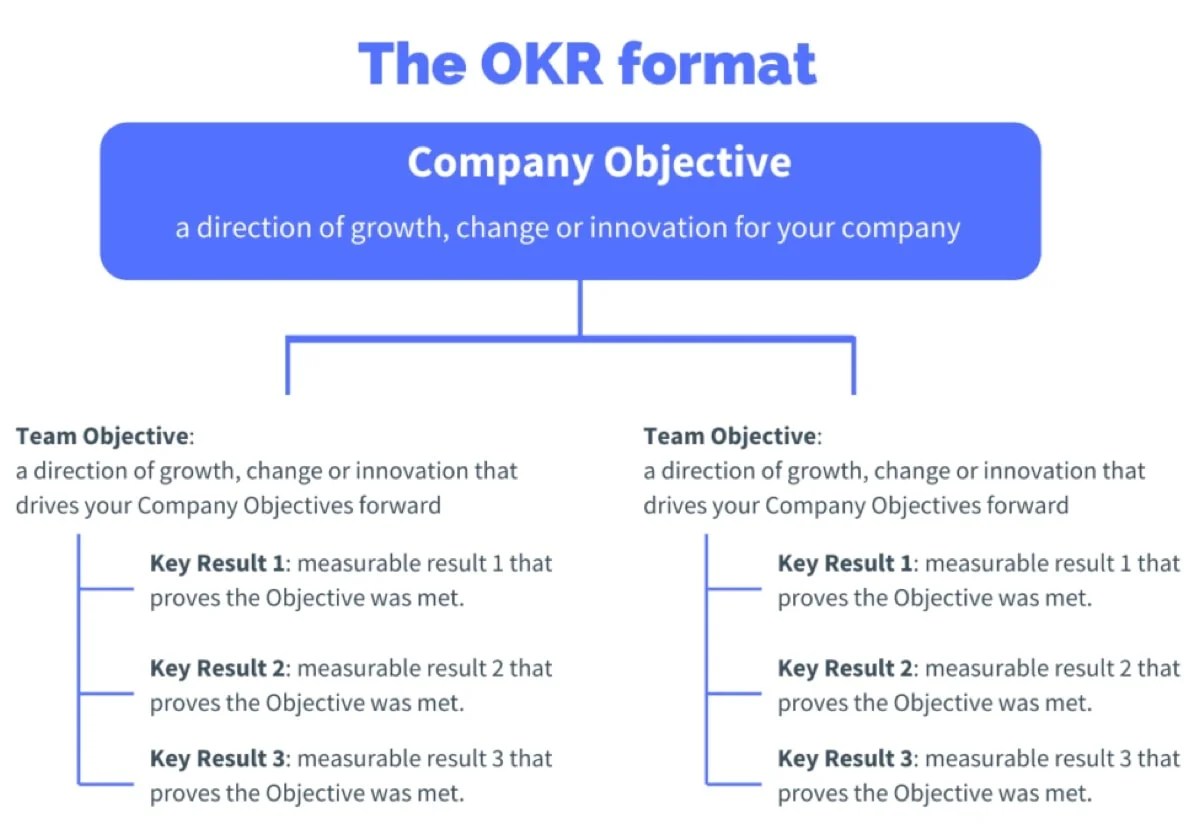People start businesses for all kinds of reasons. Some want to fill a need in the market. Others want to make their mark and become rich and influential. Still others simply want to make a living following their passion. No matter your reason for launching an ecommerce venture, you need concrete business goals to keep you on track throughout your journey.
Here’s what no one tells you: Goals don’t always have to be about massive increase in customers and revenue growth. For some, it’s about expanding into a new target market, creating an additional product line, or simply starting and sticking with a consistent email marketing schedule. Your business goals depend on where you are in the business — so you need to craft them accordingly.
In this article, we’ll explain the concept of business goals, how to create good ones, and tips to stay grounded in reality.
Business goals are specific, measurable business objectives you set for your venture. They guide all your internal efforts and are a target your teams should aim to achieve.
Here are a few examples of the different kinds of business goals:
- Financial: Improve your average profit margin by 2%, increase gross sales by 10% in the next quarter, etc.
- Customer acquisition: Acquire 100 first-time customers per month.
- Product development: Launch five new SKUs per month.
- Marketing milestones: Grow your email list to more than 1,000 subscribers.
- Operational efficiency: Reduce time to ship by one full day.
- Personal goals: Confidently take off Friday afternoons.
These goals make it easier to chart the path forward for your business. The idea is to give employees and contractors a goalpost for their activities. That way, every initiative ties back to your current priorities.
There are several other reasons why you should set goals for your business. With clear business goals in place, you can:
- Measure progress, make changes, or continue on the same path without any guesswork.
- Keep your team members motivated and moving in the right direction.
- Make better decisions based on how they relate to the overall goals you’ve set for your venture.
- Remove any vague intentions and turn every initiative into a solid commitment, encouraging follow-through from your team.
- Adapt to market changes by shifting the goalpost when needed.
While “business goals” is a catch-all phrase that refers to any goal you set for your venture, it usually falls under one of the following categories:

Financial goals
A financial goal relates to the money you make or invest in your business. These goals directly impact your viability, so you must ensure that it’s thoughtfully-created and somewhat realistic.
A financial goal might be a monthly or annual sales target, a specific average order value (AOV) or profit margin, or related to a return on investment (ROI) from marketing and advertising. Think increasing revenue by 20% in the next six months or improving profit margins by 10% by optimizing your supply chain.
That said, it’s about more than just increasing the numbers. You could also reduce operational and marketing costs, diversify revenue streams, or improve cash flow management. You could cut unprofitable product lines or reduce shipping costs.
Employee goals
In the United States, most businesses are small (seriously, like 99%) and over 80% don’t have additional employees. Most ecommerce entrepreneurs start as solo business owners with little to no startup funding and expand only when they reach an appropriate pinnacle in their business.
You shouldn’t hire employees simply for the sake of doing so, but you should be mindful of when you’re consistently missing out on higher-value tasks because you’re stuck on something you could afford to train someone else to take care of.
First hires are often for things like logistics (someone’s got to pack those orders!). You might also hire an employee if something requires specific expertise and you’re holding yourself back by trying to learn a niche trade (often the case with marketing and site performance).

On the other hand, employee goals also refer to specific goals you have for internal teams. You may want to expand the logistics team or train employees on specific software or skills. These goals tie back to your primary business goals because they result in better logistics or productivity.
Growth goals
Growth goals focus on scaling your operations, reaching new markets, and improving your capabilities.
Maybe you want to improve customer retention through subscription offers or product bundles. In that case, you’ll have to add that functionality, design any changes to product lineups, and possibly even modify your marketing.
Note: Make sure your growth goals are balanced with your capacity to manage that growth. You don’t want to invest in it without the proper infrastructure or logistics.
Operational goals
Operational goals refer to the day-to-day functioning of your business. They’re focused on improving internal efficiency and streamlining processes.

Here are a few examples of operational goals:
- Reducing order fulfillment times
- Reducing shipping errors
- Improving customer service response rates
- Improving your warehouse layout
- Finding and mastering a new, better inventory management system
- Automating sections of the order fulfillment process
In this case, you’ll have to map your current operations, identify bottlenecks, and work backwards from there. This is again where solopreneurs can get caught up trying to do things themselves — things they’re not qualified to do.
Don’t be afraid to hire an outside consultant to identify areas for improvement. A month’s investment may result in a 10% improved operational efficiency for years to come. That’s a great investment that’ll boost profits without requiring more advertising, launching a new product line, or fulfilling a single additional order.
Product goals
These goals are centered around your ecommerce store’s offerings. For example:
- Improving product quality (you could measure progress here, in part, by the rate of returns or customer service inquiries)
- Developing new products
- Optimizing complementary product mixes
One of the most common goals for business leaders is to grow the product catalog. This could mean that you’ll add 50 new SKUs within the next year or launch a new product category. The launch of new SKUs on a regular basis is important both to keep up with trends, but also to give customers a reason to make repeat purchases (improving their customer lifetime value and the ROI of your marketing activities).
When you’re setting business goals for your ecommerce store, you need to strike a balance between short-term and long-term needs. These work in tandem to help you sustainably grow the business.
Let’s look at the differences between the two:
Short-term business goals
You can achieve these goals within a year — or even less if you’re on the right track. They include the most immediate objectives contributing to the year’s business strategy.
If you’re getting your store up and running, these could be your short-term goals:
- Create the final product catalog for launch in 20 days
- Set up the website within the next two months
- Finalize vendors and logistics partners within 45 days
These goals are specific, are measurable, and take place in a relatively short time frame. That also means you can plan your activities accordingly and prioritize the most important tasks.
Long-term business goals
Long-term goals, on the other hand, span a period of one to five years, or even longer. These goals represent your broader vision for the business and often require sustained effort over time.
For instance, you might want to become a leading online retailer in the U.S. skincare industry. Or you might want to hit $2.5 million in annual recurring revenue in the next three years.
The main idea is to define these long-term goals and objectives, break them into realistic short-term goals, and work your way to them.
The SMART framework is one of the most commonly-used methods to set business goals. It was introduced in 1981 by George T. Doran, a consultant and former Director of Corporate Planning for the Washington Water Power Company. The idea was to add specificity to goals so that they’re tangible targets for your company.

Specific
Instead of a vague goal like “increase sales,” a specific ecommerce goal might be “increase gross sales of our XYZ product line by the end of February. We’ll do this by targeting existing customers through new email marketing campaigns.”
Measurable
Measurable goals let you track progress and know when you’ve achieved your business objectives. This involves specific metrics or KPIs (key performance indicators).
Instead of “improve customer satisfaction,” a measurable goal would be to “increase our Net Promoter Score (NPS) from 30 to 50.”
Achievable
While it’s good to aim high, your goals should be realistic, given your resources, market conditions, and timeframe.
Instead of aiming to “become the top online retailer in our industry within a year,” a more achievable goal might be to “increase our market share by 5% in the next 12 months.”
Relevant
Your goals should make sense for your business and contribute to your long-term growth.
If you’re a niche retailer focusing on quality over quantity, a goal to “become the highest-volume seller in your category” might not be relevant. Instead, an appropriate goal could be to “increase the customer retention rate by enhancing post-purchase follow-up processes.”
Time-bound
Time-bound goals have a clear deadline or timeframe. This creates a sense of urgency and helps prevent daily tasks from overtaking goals.
Instead of saying “increase organic traffic,” a time-bound goal would be “increase organic traffic by 50% within the next six months.”
While frameworks help, there are other factors you need to account for while creating goals. Here are a few of them:
1. Changing market conditions
The economy and market, in general, keep moving. Either new technologies come up, consumer behavior shifts, or new competitors come into the scene. You must be prepared to assess your situation relative to the market.
A recent survey found that inflation is one of the biggest concerns for consumers. This means they might cut down on luxury spending, and if you’re a luxury goods retailer, you should plan for a potential downturn in sales.
Similarly, you can expect to face several other challenges throughout the year. That doesn’t mean you pivot every month, but take stock of your actual revenue and sales numbers and use that information to decide your path forward.
Perhaps you can create new product bundles that provide a better value without ruining your luxury brand perception. Or, you may want to introduce buy now, pay later options to help consumers pay for their purchases.

2. Dealing with multiple priorities
It’s normal to have multiple looming priorities simultaneously, making it hard to maintain focus. Let’s say your website isn’t performing well. So, do you invest more into search engine optimization (SEO) to increase organic traffic or into improvements to the user experience to boost conversation rates of your existing traffic? That’s a challenge.
The best way forward would be to prioritize goals based on their impact and your available resources. If you need to improve short-term conversion rates, prioritize the user experience.
3. Data overload
Even if you consider your operation to be quite small, you still likely have access to more data than 99% of merchants in the world’s history. There’s a lot. While you should lean in to data to make decisions, you could monitor it too often and miss the bigger picture.
Alternatively, you might set too many goals, leading to unfocused efforts. This is why you need to identify the most relevant key performance indicators (KPIs) based on your goals and monitor them every month. This lets you measure only what needs to be measured while you collect the rest of the data for future use.
4. Unrealistic expectations
If you’re relatively new to the industry, you might get swayed by success stories you see or hear elsewhere and set unrealistic goals based on these stories. But that’ll only result in a demotivated team and a waste of resources.
That’s why you need to base goals on thorough market research, historical data (if available), and a proper assessment of resources and capabilities.
Comparison is the thief of joy. Decide what’s realistic for your current situation and make continuous progress, even if it’s a bit slow. Looking back on a few years, you’re bound to have grown (either in actual numbers or in things you’ve learned) in a way that brings a smile to your face.
5. Unexpected external factors
External factors like economic downturns or supply chain disruptions are beyond your control. So, you need to build contingency plans and pivot when needed.
The COVID-19 pandemic is an excellent example of such a situation. When the lockdown was implemented, many physical store-based businesses like First Choice (specialty fine foods) lost all their business overnight. That didn’t stop them from making a hard pivot and building success online.

Within 24 hours, they worked with a marketing partner and WooCommerce to set up an online store and started selling directly to consumers. The change in business strategy was so well received that they were getting ~800 orders a day.
Now that you know how to create a solid business goal, let’s look at how you can set achievable ones.
1. Document your action plan
Creating a business objective, or goal, is just the first step. Unless you document it, it’s just a mental note you’ve made to yourself.
Putting pen to paper — literally or digitally — creates a sense of motivation to achieve it. It also lets you create a roadmap for your team. For each step, specify what needs to be done, who is responsible for it, and when it needs to be completed.
Example: Your goal is to increase AOV by 20% in the next six months. So your action plan could look like this:
- Analyze revenue data to identify the most popular and highest-grossing products (these may not be the same)
- Talk to your target audience about which products they would like to pair with those popular items
- Work with the product team to create new product bundles and SKUs
- Identify and start any development work related to upsell and cross-sell tools (product recommendations)
- Develop a customer loyalty program and more aggressive email marketing opt-in offer
- Launch the product bundles with special offers for loyalty members and email subscribers
- Launch the additional upsell and cross-sell tools
- Measure results and refine, refine, refine!
2. Make sure your goals are quantifiable
If you want your goals to materialize into tangible benefits, they need to be quantifiable. Don’t say, “Let’s increase sales.” Say, “Let’s increase monthly sales by 25% in the next quarter.”
But before you begin, make sure to first establish your baseline. You need to know where you’re starting from to measure improvement effectively. Instead of creating random goals, use current benchmarks or internal data to aim higher. This offers a frame of reference and lets you choose a number that will genuinely impact your business.
While you may only hit the target some of the time, measuring progress can inspire further motivation, and you can use that data to make better decisions in the future.
3. Evaluate the feasibility of your goals
Ambition is key — but only when you ground it in reality. Whether you’re working alone or with a team, brainstorm ways to achieve your business goals.
Consider current resources like budget, team size, and time availability. Are your goals achievable with what you currently have? If you need more resources, can you get them in time?
Also, research external factors like seasonal trends, new regulations, or the economy. Then, you can make a practical decision before finalizing your goals.
4. Build a goal-oriented company culture
There’s a lot of difference between setting goals and enabling team members to achieve them. If you have employees, consider incentivizing them to meet these goals using the objectives and key results (OKR) framework.

You could also set individual performance targets or team-specific goals and review progress regularly. When your teams meet their targets, celebrate their achievements through reward systems and public acknowledgment. This reinforces the importance of meeting goals and keeps them motivated.
5. Get regular feedback from employees and customers
Quantitative metrics only tell part of the story. You need qualitative feedback to truly understand if your customers and employees are happy with your brand. Employee satisfaction and customer satisfaction go hand in hand.
A Khoros report found that businesses underestimate how often customers deal with poor experiences by 38%. So, staying in touch with your target audience regularly will help you create more relevant goals.
Either send surveys or incentivize reviews to see which parts of your business perform well and which don’t. Shoppers may find it hard to search for products, or the checkout process might not work well. In this case, you know you have to invest more resources into website improvement.
Similarly, ask your employees anonymously about their challenges while working towards their goals. You’ll get more insights into the bottlenecks impacting your business, allowing you to work towards them.
6. Stay motivated and take a long-term view
Always keep your “why” in focus. Regularly remind yourself and your team of the reasons behind your goals. Whether it’s to provide a more stable company for everyone’s future, allow yourself to work on your passion full time, or give back more to causes that matter, reiterating your “why” will make sure everyone’s driven at all times.
That said, even if you have setbacks, know it’s a normal part of running an ecommerce business. Things are constantly changing, so you’ll be fine if you have a growth mindset and can adapt to those changes. That’s also why you need to take a long-term view and keep the business’s vision in mind when you’re setting or pivoting your goals.
Regularly review progress with your team and find areas for improvement. Each review is a learning opportunity — so if you adopt that mindset, it’d be much easier to stay motivated in the long run.
Pro tip: Before you finalize any of your goals, take a moment to consider (and ask for help from employees or advisors) how achieving these goals could impact the organization long-term, both good and bad. For example, running constant sales and discounts might help you generate record gross sales this quarter, but could fatigue customers and lower your products’ value next quarter. Adjust accordingly.
Goal setting is not a one-time task, but an ongoing process. You need to take a holistic view while building these goals and always lean on internal data. Maybe your customer support tickets indicate a larger priority, or your employees need support in a specific part of the business. All these aspects give you direction on which goals to prioritize and how to achieve them.
Each goal you set and achieve, no matter how small, is a step towards building a successful and resilient online business.
WooCommerce has the tools you need to boost sales, improve operations, and become more profitable. Check out the Woo Marketplace today.
Erika focuses on experiential marketing and demand generation at Woo. When she’s not making cookies and visiting every bakery she comes across, she can be found creating experiences and programs that bring the Woo brand to life.









